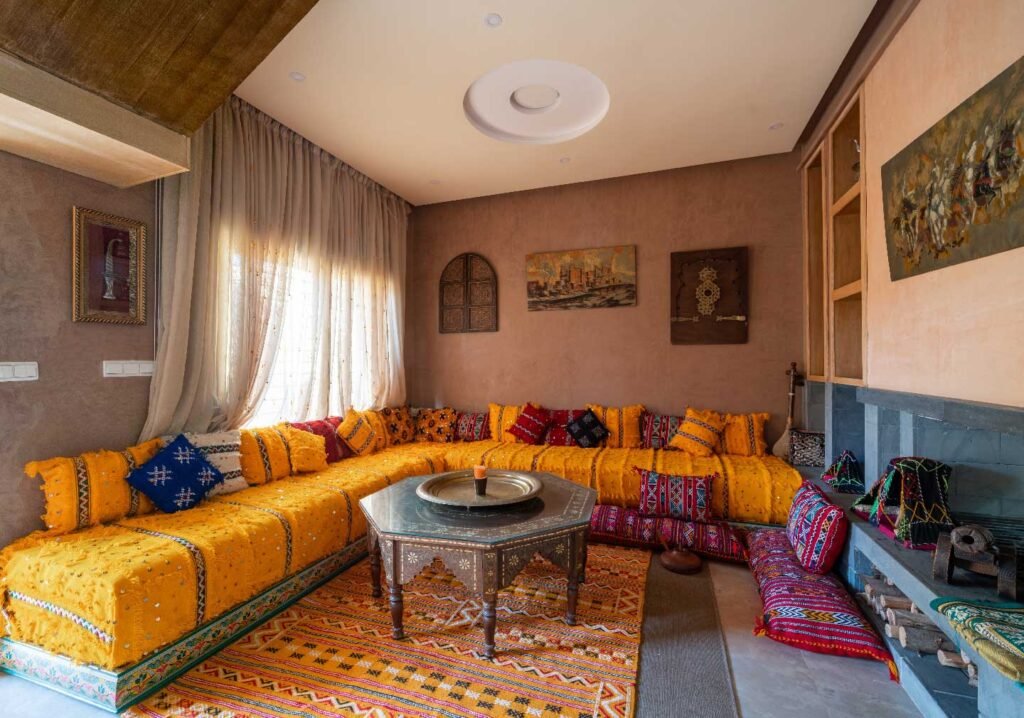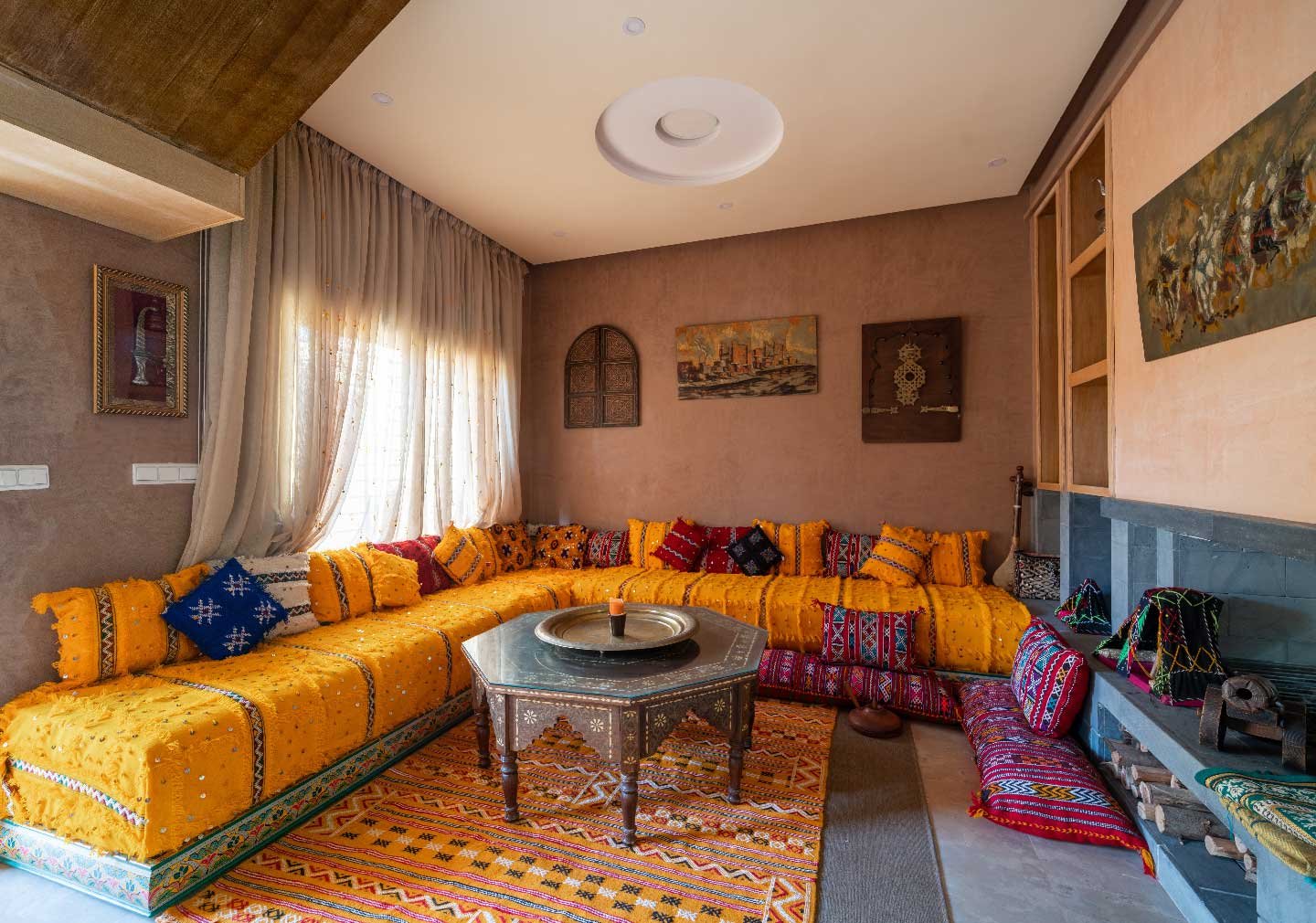
Moroccan furniture embodies a mesmerizing blend of history, artistry, and cultural richness that elevates any living space. Rooted in centuries-old craftsmanship, these pieces fuse vibrant colors, intricate patterns, and organic materials to create an ambiance that feels both exotic and inviting. From bustling souks to modern homes, Moroccan decor has transcended borders, captivating design enthusiasts worldwide. This article explores the essential Moroccan furniture pieces that can transform your home into a sanctuary of style and comfort. Whether you’re drawn to bold statement items or subtle accents, understanding their unique appeal is key to curating a cohesive aesthetic. Let’s dive into the world of Moroccan design and uncover the treasures that await.
The Allure of Moroccan Design in Modern Homes
Moroccan furniture stands out for its ability to harmonize tradition with contemporary living. Influenced by Berber, Arab, and Andalusian cultures, it showcases a distinctive flair that feels timeless yet fresh. Think hand-carved wood, plush textiles, and metallic accents—all crafted with meticulous attention to detail. These pieces don’t just furnish a room; they tell a story of heritage and resilience. In today’s homes, they add warmth and character, effortlessly blending with minimalist, bohemian, or eclectic styles. By incorporating Moroccan elements, you invite a sense of wanderlust and sophistication into your space.
The Moroccan Pouf: A Versatile Seating Star
No Moroccan-inspired decor is complete without the iconic pouf. These low, cushioned seats, often made from leather or woven fabrics, are both functional and decorative. Traditionally stuffed with cotton or wool, they offer flexible seating for guests or a cozy footrest after a long day. Their vibrant hues—think saffron, indigo, or earthy tans—and intricate stitching make them instant focal points. Place one in your living room or bedroom for a pop of texture and color. According to Architectural Digest, poufs are celebrated for their adaptability, effortlessly complementing various design schemes while adding a touch of global charm.
The Majesty of the Moroccan Coffee Table
A Moroccan coffee table is more than a surface—it’s a work of art. Typically crafted from dark woods like cedar or walnut, these tables feature elaborate carvings or inlaid tile work that reflect Moorish influences. Their low profiles align with traditional Moroccan seating, encouraging intimate gatherings. Some designs incorporate hammered brass trays, blending utility with elegance. Positioned in a living room, they anchor the space with understated grandeur. For inspiration, Elle Decor highlights how such tables elevate decor by merging practicality with cultural depth, making them a must-have for enthusiasts of refined aesthetics.
The Timeless Charm of Moroccan Rugs
Moroccan rugs are the heartbeat of authentic decor, renowned for their plush textures and bold geometric patterns. Handwoven by Berber artisans, these rugs often feature neutral tones punctuated by vivid symbols, reflecting tribal stories. The shaggy Beni Ourain or the colorful Boucherouite styles can define a room’s mood—whether serene or spirited. Lay one beneath a coffee table or in a bedroom to infuse warmth and softness. As noted by The Spruce, their durability and versatility make them a worthwhile investment, seamlessly tying together furniture and decor elements with effortless grace.
Moroccan Lanterns: Illuminating Ambiance
Lighting sets the tone in Moroccan design, and lanterns are its crowning jewel. Crafted from brass, copper, or stained glass, these fixtures cast intricate shadows that dance across walls. Whether hung from ceilings or placed on tables, they create a magical, intimate glow reminiscent of Marrakech nights. Opt for a cluster of varying sizes to enhance a dining area or patio. Their perforated designs, often adorned with filigree, marry form and function. House Beautiful praises their ability to transform spaces into enchanting retreats, proving their worth as essential decor pieces.
The Regal Moroccan Daybed
A Moroccan daybed offers a luxurious twist on lounging. Upholstered in rich fabrics like silk or velvet and piled with cushions, it evokes the opulence of a sultan’s palace. Often framed in carved wood, it serves as a statement piece in living rooms or sunlit nooks. Its low stature invites relaxation, perfect for reading or casual gatherings. Customize it with jewel-toned throws to amplify its allure. This piece reflects Morocco’s love for comfort and beauty, making it a standout addition that balances practicality with extravagance.
Moroccan Armoires: Storage with Soul
Storage needn’t be mundane, and Moroccan armoires prove it. These towering cabinets, adorned with hand-painted motifs or metal overlays, turn utility into art. Used traditionally to store textiles or spices, they now house everything from linens to electronics. Their robust construction, often in cedar or teak, ensures longevity. Place one in a hallway or bedroom for a striking yet functional accent. Dwell notes their dual role as decor and storage, highlighting how they infuse spaces with personality while keeping clutter at bay.
The Intricate Moroccan Mirror
Mirrors amplify light and space, and Moroccan designs do so with flair. Framed in wrought iron or carved wood, these mirrors feature arched shapes or geometric patterns that echo Islamic architecture. Hang one above a console or in a bathroom to add depth and drama. Their reflective surfaces paired with ornate detailing create a captivating interplay of light. Ideal for small or grand spaces alike, they’re celebrated by Better Homes & Gardens for their ability to enhance rooms with minimal effort, making them indispensable in Moroccan decor.
Comparison Table: Moroccan Furniture Highlights
| Furniture Piece | Key Feature | Best Placement | Style Impact |
|---|---|---|---|
| Pouf | Versatile, colorful | Living room, bedroom | Casual, eclectic |
| Coffee Table | Carved, low-profile | Living room | Elegant, grounding |
| Rug | Bold patterns, soft | Any room | Warm, foundational |
| Lantern | Intricate, glowing | Dining, patio | Romantic, atmospheric |
Blending Moroccan Pieces into Your Home
Integrating Moroccan furniture requires balance. Start with one or two statement pieces—like a rug or coffee table—then layer in accents like poufs or lanterns. Stick to a cohesive color palette, drawing from Morocco’s earthy and jewel-toned spectrum. Pair with neutral walls to let the furniture shine, or embrace bold hues for a maximalist vibe. Texture is key: mix wood, metal, and fabric for depth. Avoid overcrowding; let each piece breathe to maintain its distinct charm. This approach ensures a harmonious fusion of Moroccan flair with your existing decor.
Caring for Moroccan Furniture
Preserving Moroccan pieces ensures their longevity. Dust wooden items like armoires or tables with a soft cloth, avoiding harsh chemicals that dull finishes. For rugs, vacuum gently and spot-clean stains with mild soap. Leather poufs benefit from occasional conditioning to prevent cracking. Lanterns may need polishing to maintain their gleam—use metal-specific cleaners for brass or copper. Store textiles away from direct sunlight to prevent fading. Proper care keeps these heirloom-quality items vibrant, allowing them to grace your home for years.
Where to Source Authentic Moroccan Furniture
Authenticity matters in Moroccan decor. Local artisan markets in Morocco offer unparalleled craftsmanship, but online retailers like West Elm or specialty stores provide accessible alternatives. Look for fair-trade certifications to support artisans. Vintage shops or auctions can yield unique finds, often with rich patinas. Research sellers for quality assurance—handmade details like uneven stitching or natural wood grains signal genuineness. Investing in authentic pieces not only enhances your decor but also honors Morocco’s artisanal legacy.
FAQs About Moroccan Furniture in Home Decor
What makes Moroccan furniture unique?
Its blend of cultural influences, vibrant patterns, and handcrafted details sets it apart, offering a distinctive aesthetic.
Can Moroccan pieces fit modern homes?
Absolutely—they adapt to various styles, adding warmth and character without clashing.
How do I maintain a Moroccan rug?
Vacuum regularly, spot-clean spills, and avoid prolonged sun exposure to preserve its colors.
Are Moroccan poufs comfortable?
Yes, their cushioned design provides cozy seating or support, though they’re lower than typical chairs.
What’s the cost range for these items?
Prices vary—poufs start at $50, while rugs or armoires can reach hundreds, depending on craftsmanship.
Conclusion: Elevate Your Space with Moroccan Mastery
Moroccan furniture offers an unparalleled opportunity to infuse your home with soulful elegance. From the versatile pouf to the regal daybed, each piece carries a legacy of craftsmanship and beauty. These essentials don’t just decorate—they inspire, transforming spaces into havens of comfort and style. By thoughtfully integrating them, you create a narrative that celebrates global artistry while meeting modern needs. Whether you’re starting small with a lantern or going bold with a rug, Moroccan decor promises lasting impact. Embrace these treasures, and let your home reflect the timeless allure of Morocco’s design heritage.

